Frontlines: Fuel of War Review
Frontlines: Fuel of War
Does a single-player campaign make a better Battlefield? Stu joins the Frontlines to find out?
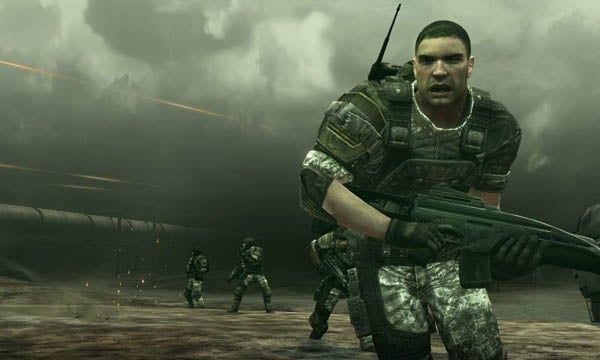
Verdict
Key Specifications
- Review Price: £24.95
”’Platforms: PC and Xbox 360”’
Is modern combat the new World War II? With Battlefield 2, Call of Duty 4 and Conflict: Denied Ops behind us and Battlefield: Bad Company and Far Cry 2 ahead, it’s definitely beginning to feel that way. Of course, Frontlines isn’t actually set in the modern day – the conflict in question is a near-future scrap over oil and energy between a Russian/Chinese alliance and the western world – but it still feels very much like Call of Duty 4 or Battlefield 2. The latter might not be surprising considering that in a past life its developer, Kaos Studios, was known as Trauma Studios; best known for creating the Desert Combat mod for Battlefield 1942.
For a whole mass of other reasons, it’s impossible to talk about Frontlines without mentioning DICE’s Battlefield series – and particularly Battlefield 2. This is still fundamentally a game of large maps designed for large numbers of troops, based around control points to occupy and objectives to destroy. It also focuses heavily on vehicles, with a range of different armoured cars, tanks, helicopters and jets for those moments when you need to travel (and blow things up) in relative safety and style. It’s also a game that demands and rewards teamwork rather than every-man-for-himself showboating. If you’re a Battlefield 2 veteran, even the scenery and the character models can seem eerily familiar at times. Denying any similarity between the two games would just be silly.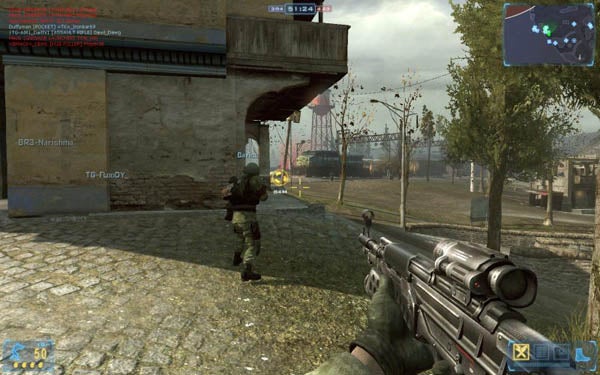
Yet Frontline does deviate from the established Battlefield formula in some very significant ways. Most importantly, it’s a game where single-player action – not just multiplayer – is a real priority. Those cynically expecting a glorified bot-match are in for a shock. Frontlines has a proper single player campaign, based on the activities of the Stray Dog assault company during a critical period of what soon becomes a third-world war. Each mission within that campaign has a proper structure, with the completion of one set of objectives opening up another, and even its own set-pieces. Kicking off with a simple patrol around a contested oil facility, it’s not long before you’re involved in attacks on tank factories, sniper incursions into enemy territory and full-scale assaults on missile bases and enemy HQs.
It’s while playing the single-player campaign that thoughts of Ghost Recon Advanced Warfighter and its sequel or Call of Duty 4 will inevitably creep in, which is almost a complement for a game that’s still firmly based on the basic play mechanics of a Battlefield game. However, while the actual run and gun gameplay is very reminiscent of GRAW2 or CoD4, the combat in Frontlines feels more organic and less contrived. You have a certain degree of control, and you’re not just being funnelled from firefight to firefight to set-piece. The maps are surprisingly wide-open, and you’re free to achieve the objectives in your current list in roughly any order. If there are tanks or armoured cars to use then you can use them, but rarely are you forced to. You can pick up deployable heavy weapons (including an awesome railgun) and use them where you will, or take one of the various drones and employ them as you see fit. For once, you feel in control of the action.
The drones are one of the coolest additions to the game. We get explosive drones which can be driven under tanks or enemy encampments and blown up. We get flying drones – imagine one of those mini remote-control helicopters, except this one’s armed with little rocket-launchers. We even get a little thing that reminds me of the classic eighties toy Big Trak, only this Big Trak has mounted machine guns. Using these intelligently to sweep enemy defence points or soften up the heavy armour is always good for a laugh – and in some missions an important survival skill.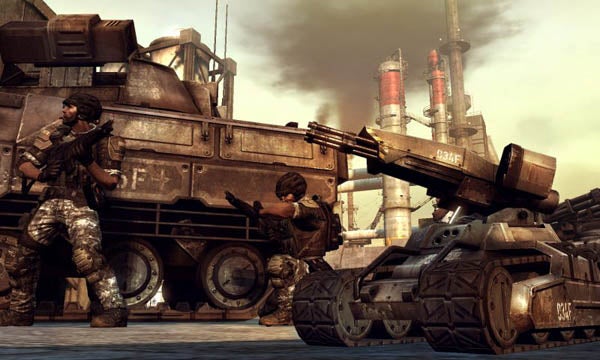
And while the single-player campaigns in GRAW2 and CoD4 allowed you to shoot things from the comfort of a plane or helicopter, did they let you pilot them as well? One of the great things about Frontlines is how well it integrates its vehicle roster into the single-player game. We’re not talking on-rails sections or missions dedicated to tank actions – just missions where tanks and helicopters can play a crucial part in the action. 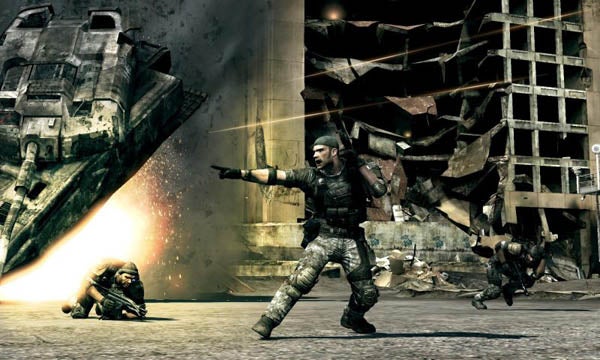
Now, a game like this stands or falls on the quality of the AI. For the most part it’s pretty good; the other guys in your squad aren’t often found standing around doing nothing, and they do a good job of supporting your activities and mopping up any enemy troops in range. Your foes, meanwhile, act capably in concert and manage the odd sneaky outflanking manoeuvre, coming behind you to surprise you when you least expect it. There are times, however, when the illusion slips. Sometimes allies and foes seem unable to see each other, passing one another in a relatively narrow space without so much as a shot exchange – annoying when the Ruskie goon then starts taking pot-shots at you behind your dozy mate’s back. Equally, there are times when a whole gang of hostiles will pop out of cover and practically queue up to be shot. I’m also more than a little suspicious that the game sometimes respawns more enemies behind you in areas you’ve already cleared of trouble. I haven’t been able to confirm this, but on some levels the evidence definitely points that way.
All of this – not to mention a fine selection of near-futuristic assault rifles, sniper rifles, handguns and rocket launchers – points to a decent single player experience. Well, that’s exactly what Frontlines provides. It isn’t, however, an incredible one. It’s consistently good, but rarely great. In fact, it never reaches the dramatic highpoints found in GRAW2 or CoD4, or matches the tension of the latter’s dazzling flashback sniper mission.
What’s more, it’s a little bit samey, with too many missions that play alike and – worse – look alike. Maybe it’s the concept, maybe it’s the art, but there’s no getting away from the fact that the world of Frontlines is rather barren, boring and brown. While the game uses the Unreal 3 engine, it’s a solid rather than a spectacular production. Where GRAW2 had incredible near-photorealistic detail and stunning heat haze and lighting, or where CoD4 had gorgeous environments, believable characters and convincing cinematic effects, Frontlines all looks a little bit – and only a little bit – bland. The PC version fares better than the Xbox 360 version here, as the textures are sharper and more detailed while the models seem a little more refined. One word of warning for Geforce 8 owners, however. While the game ran smoothly at maximum settings on my Core 2 Quad Extreme QX6850/Asus GeForce 8800 Ultra system, I had to turn down the ‘foliage’ setting to eliminate periodic frame rate stutters. Hopefully this issue will be fixed with a future patch. 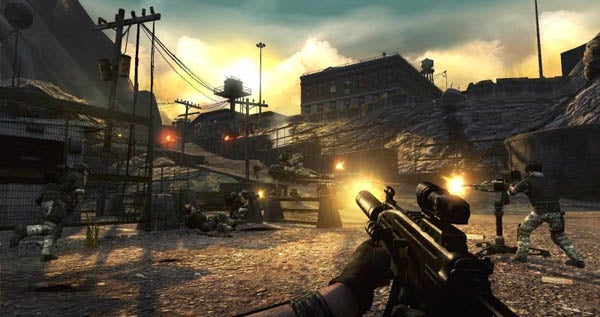
If you’re choosing between the two versions, you also might want to consider the controls. The PC’s mouse/keyboard controls mirror the default Battlefield 2 settings, which makes sense as that’s what a lot of people picking up this game will be used to. The 360 controls, however, seem to mirror the Halo approach. Movement, aiming and firing are as you might expect, but the zoom in targeting feature isn’t on the left trigger – as it is in Call of Duty 2 to 4 – but on a click down of the right analogue stick, as in Halo 3. The sprint button, meanwhile, is on the right bumper. It depends on what you’re used to, I guess, but I found it a minor annoyance.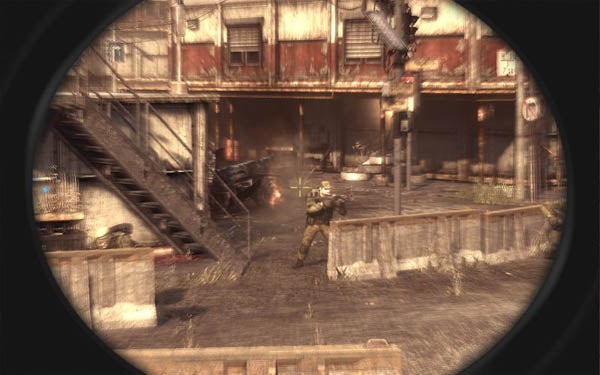
All this said, Frontlines is still the best single-player FPS I’ve played so far this year. Admittedly, considering competition like Turok, this isn’t that much of an achievement, but for those who’ve cracked Crysis, Orange Box and CoD4 on the PC or Halo 3 and the last two on the 360, it should be more than enough. The real pulling power of Frontlines, however, is the multiplayer option. Sure, both formats are already well provided for when it comes to online FPS action, but Frontlines something new. On the 360, it delivers a bigger experience than either Battlefield 2: Modern Combat, GRAW2 or Call of Duty 4; something closer to the full-scale PC version of Battlefield just by virtue of the size of the maps, the ubiquity of vehicles and the numbers of players involved (anywhere between 4 and 50 depending on the map). On the PC, where Battlefield 2 and 2142 rule the roost, that’s not the case. Yet even here Frontlines offers a subtly different variation on the Battlefield style.
The key is the frontline of the title. As you capture control points, the areas marked red and blue on the map ebb and flow and the frontline between them shifts position. As it does so, the players on either side are gently pushed to attack/defend the control points nearest to it. As a result, the battles tend to concentrate around the frontlines rather than scattered all around the map as they can be in Battlefield 2 or 2142, and the players are kept focused without any need for the sort of AI command structure used in Enemy Territory: Quake Wars. It’s a good system, and even on the larger maps there seems to be less time wandering looking for a scrap than there was in the recent Battlefields. Meanwhile, the game’s flexible class system, with varying load-outs that encompass drones, EMP capabilities and the authority to call in air strikes, ensures that you’ll find a role that suits you.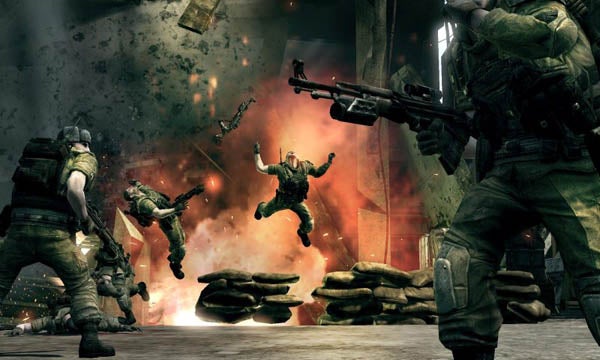
It’s a lot of fun, and generally speaking the maps seem stronger, more convoluted and more dynamic than the ones in Battlefield 2 or 2142. On the downside, despite the frontlines and the drones it’s not that different a game, and novices should beware that, on the PC at least, Frontlines has already been co-opted by ex-members of the Battlefield fan club. As a direct result, it can be hard to get a foothold in a game without being blown away repeatedly – sometimes when you’ve only just respawned.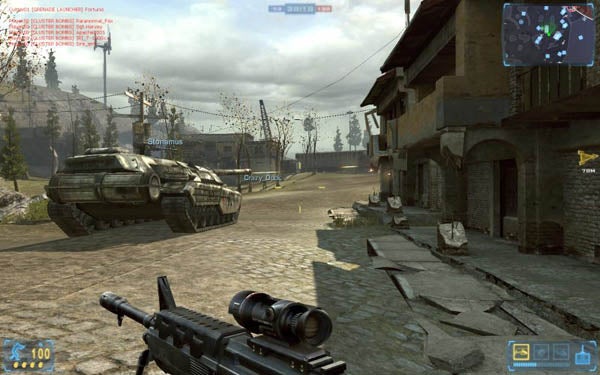
All the same, that’s more a warning than a valid criticism. What matters is that Frontlines does a sterling job of bringing the Battlefield experience to console gamers and provides enough new stuff to PC Battlefield players to give them reason to at least give it a try, even if they don’t end up deserting DICE altogether. That it does so while packing in a solid single-player game is all the more reason to recommend it, though I still think this is more one for the hardcore FPS gamer than the more casual Halo 3 or Call of Duty 4 crowd.
One final point: the PC version is not the most stable of beasts at the moment, despite a worryingly hasty patch on day one of release. Vista users, those with onboard sound and those with Geforce graphics cards seem to be suffering particularly badly – and as I tick all of the above boxes I had a hellish time getting the game up and running. You might want to bear this in mind and wait for more patches to roll out before making your purchase.
”’Verdict”’
A worthy opponent to the established Battlefield series augmented by a decent single-player campaign. Frontlines is neither different enough nor exciting enough to make it essential, but if you’re a fan of this genre you’ll definitely enjoy it.

